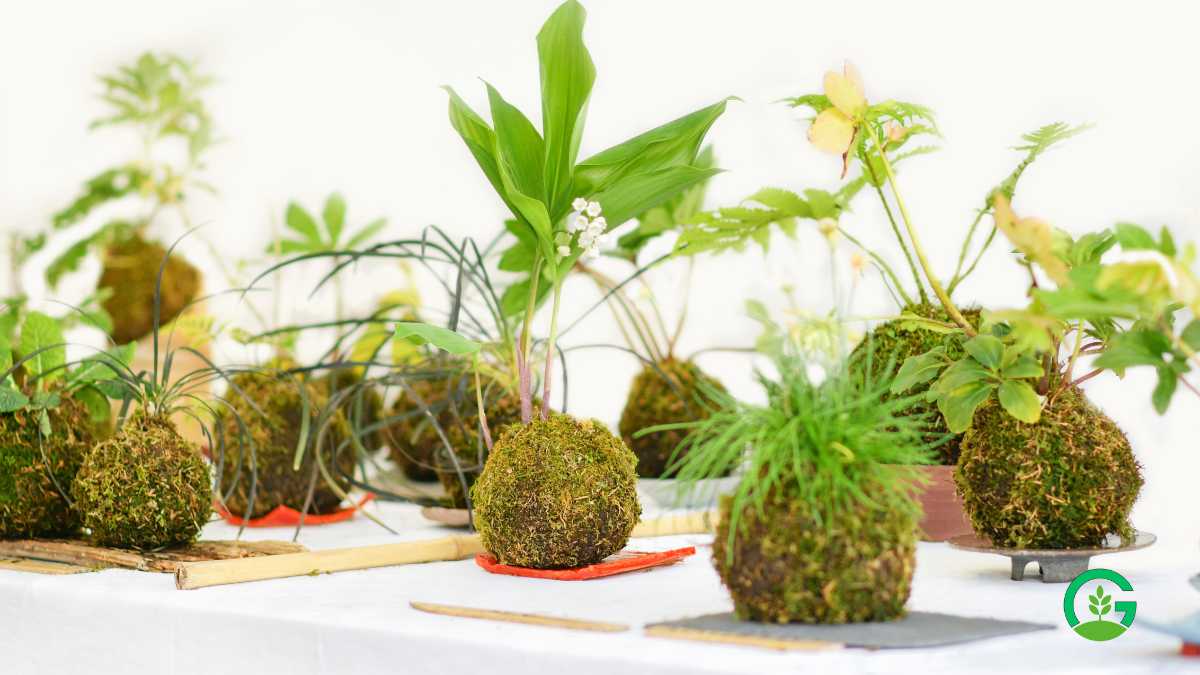Kokedama plants, often referred to as “moss balls,” are a unique and captivating way to display your favorite greenery. Whether you’re a seasoned plant enthusiast or just starting your journey into the world of indoor gardening, kokedama plants offer a fun and rewarding experience. In this comprehensive guide, we’ll explore everything you need to know about growing and caring for these delightful botanical creations.
Table of Contents
What are Kokedama Plants?
Kokedama, originating from Japan, translates to “moss ball” in English. It involves encapsulating a plant’s root system in a ball of soil, wrapped with moss, and often bound with string or twine. This method creates a visually appealing and self-contained way to display plants, perfect for those with limited space or a desire for unique home decor.
Choosing the Right Plants for Kokedama
Selecting the appropriate plants for your kokedama is crucial for their long-term health and vitality. Opt for species that thrive in humid environments and have compact root systems. Some popular choices include ferns, ivies, succulents, and small flowering plants like orchids.
Creating the Perfect Kokedama Ball
Creating your kokedama is a fun and creative process. Start by preparing a mixture of bonsai soil and peat moss. Moisten the mixture until it’s damp but not soggy. Next, carefully remove the plant from its pot and gently shake off excess soil. Mold the soil mixture around the roots to form a ball, then wrap it with damp moss and secure it with twine. Voila! You have your very own kokedama ball.
Watering and Moisture Control
Watering your kokedama requires a delicate balance to prevent over or under-watering. Submerge the moss ball in a bowl of water for 5-10 minutes, allowing it to absorb moisture thoroughly. Alternatively, misting the moss regularly can help maintain adequate humidity levels. Monitor the moisture content regularly and adjust your watering schedule accordingly.
Providing Adequate Light
Light is essential for the health and growth of your kokedama plants. Place them in a location with bright, indirect sunlight to ensure they thrive. Avoid placing them in direct sunlight, as this can scorch the delicate foliage. If natural light is limited, consider supplementing with artificial grow lights.
Fertilizing Your Kokedama
To keep your kokedama plants healthy and vibrant, fertilize them regularly during the growing season. Choose a balanced, water-soluble fertilizer and dilute it to half strength to prevent burning the roots. Apply the fertilizer once a month, following the manufacturer’s instructions carefully.
Repotting and Maintenance
As your kokedama plants grow, they may outgrow their moss balls and require repotting. Monitor the root growth and repot as needed, typically every 1-2 years. During repotting, gently remove the old moss and soil, trim any excess roots, and replant in fresh soil mixture. Regularly trim any dead or yellowing foliage to encourage new growth.
Dealing with Common Pests and Problems
Despite your best efforts, kokedama plants may encounter pests such as aphids, mealybugs, or spider mites. Inspect your plants regularly for signs of infestation, such as yellowing leaves or webbing. Treat any pests promptly with insecticidal soap or neem oil, ensuring thorough coverage of both the foliage and soil.
Displaying Your Kokedama Plants
The versatility of kokedama plants makes them perfect for displaying in various ways. Hang them from the ceiling using decorative hooks, arrange them on a tray or dish for a tabletop centerpiece, or place them in shallow bowls for a minimalist look. Get creative and experiment with different arrangements to showcase your green thumb.
Kokedama Care Tips for Success
- Monitor Moisture Levels: Regularly check the moisture content of your kokedama to ensure they’re neither too dry nor too wet.
- Rotate for Even Growth: Rotate your kokedama plants occasionally to ensure all sides receive adequate sunlight and promote even growth.
- Prune Wisely: Prune dead or yellowing foliage promptly to maintain the health and appearance of your kokedama.
- Avoid Overcrowding: Give your kokedama plants ample space to grow and thrive by avoiding overcrowded displays.
- Enjoy the Process: Growing and caring for kokedama plants is a rewarding journey. Take pleasure in watching your botanical creations flourish and bring life to your home.
Conclusion
In conclusion, kokedama plants offer a unique and enchanting way to incorporate nature into your home decor. By following these simple tips and guidelines, you can create and care for your own kokedama creations with ease. Embrace the creativity and joy that comes with nurturing these beautiful botanical wonders.
FAQs (Frequently Asked Questions)
Can I make my own kokedama at home?
Yes, absolutely! Making your own kokedama is a fun and rewarding DIY project that requires minimal materials and expertise.
How often should I water my kokedama plants?
Watering frequency will depend on factors such as plant type, environmental conditions, and the season. Monitor the moisture levels regularly and adjust your watering schedule accordingly.
Do kokedama plants require special soil?
While kokedama plants thrive in a well-draining soil mixture, you can use a variety of substrates, including bonsai soil, peat moss, and perlite.
Can I hang my kokedama plants outdoors?
While kokedama plants are typically grown indoors, they can be hung outdoors in mild climates or during the warmer months. Ensure they’re protected from direct sunlight and extreme weather conditions.
How do I know if my kokedama plants are healthy?
Healthy kokedama plants will exhibit vibrant foliage, firm moss balls, and robust root systems. Monitor for signs of wilting, yellowing leaves, or pest infestation, and address any issues promptly to maintain their health and vitality.
















